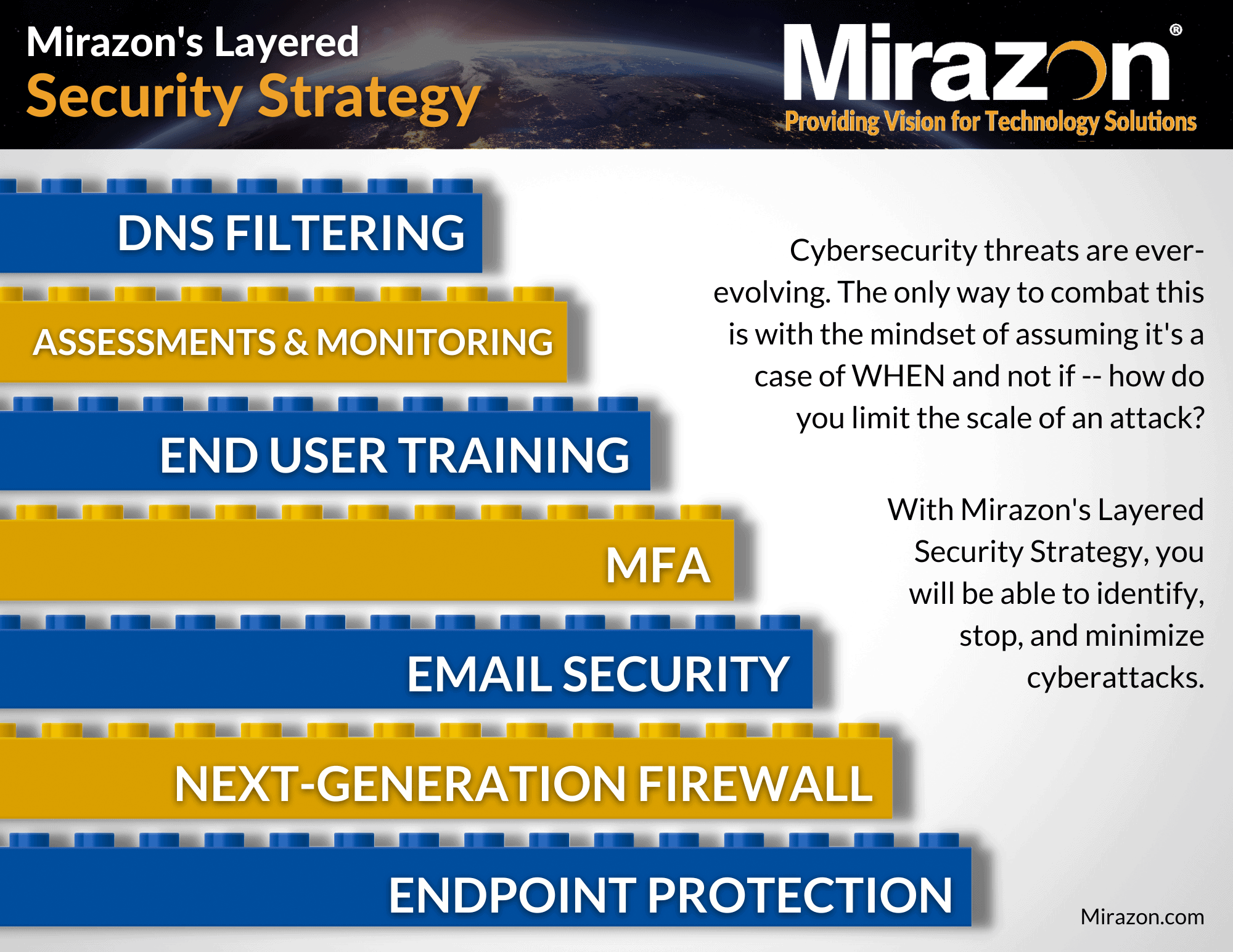
In the fast-paced world of digital security, Multi-Factor Authentication (MFA) plays a vital role. MFA is an essential step for verifying and securing access to online accounts and resources. However, the downside to MFA is that it is becoming more and more prevalent, causing what is known as MFA fatigue.
MFA fatigue often leads to lower user compliance and drops in security measures. In this blog, we’ll discuss what MFA fatigue is, the factors that contribute to it, how to overcome it, and the preventative measures you can take to keep it from happening in the first place.
Download Our Layered Security Strategy Guide
What Is MFA Fatigue?
MFA fatigue typically refers to the frustration experienced by users due to the increased use of Multi-Factor Authentication (MFA) mechanisms.
MFA is an effective security measure to enhance account protection, but it can be perceived as cumbersome by users, especially if they need to authenticate frequently throughout the day. MFA fatigue can lead to user resistance and/or irritation, potentially resulting in poor security practices (e.g., using weaker passwords) or avoidance of security measures.
These bad habits have the potential to lead to MFA fatigue attacks, also known as MFA bombing or MFA spamming, which is a type of social engineering tactic. The goal is to make users tired or annoyed so that they give in to an MFA request out of frustration, allowing attackers to access their account or device without permission.
So, now that we know exactly what MFA fatigue is, let’s dig a little deeper into what can cause it.
Causes Of MFA Fatigue
MFA fatigue among employees can stem from the consistent need to employ varied authentication methods on a daily basis. The recurring nature of these authentication procedures can result in frustration, annoyance, and non-compliance – especially when compounded by the dynamic nature of MFA requirements. As security levels fluctuate, users may find themselves grappling with evolving sets of authentication steps, adding complexity to their routine.
User Experience
A significant contributor to MFA fatigue is the prevalence of poor user experiences associated with these security measures. Cumbersome processes and intricate steps can leave employees feeling bogged down and hinder the seamless flow of their daily tasks. When MFA becomes more of a hindrance than a support, users are likely to experience heightened frustration, potentially leading to lapses in adherence to secure practices.
Shifting MFA Requirements & Education
Additionally, the inconvenience caused by shifting MFA requirements, coupled with a lack of adequate education on the importance of these security measures, further exacerbates MFA fatigue. Users might not fully understand the necessity of the authentication protocols or the potential risks associated with non-compliance. A lack of awareness and education can contribute to a sense of annoyance, making users more susceptible to shortcuts or neglecting security best practices.
Addressing the causes of MFA fatigue requires a holistic approach that considers not only the technical aspects of authentication but also the user experience and education surrounding security practices. Striking a balance between robust security measures and user-friendly processes is essential to alleviate MFA fatigue and promote a culture of security.
Overcoming MFA Fatigue
Recognizing the importance of MFA in strengthening online security, organizations can proactively tackle the issue of MFA fatigue to ensure a harmonious balance between robust protection and user convenience.
Single Sign-On Portals
One effective strategy involves the adoption of a Single Sign-On (SSO) portal integrated with MFA capabilities. With an SSO portal, users undergo the authentication process only once, after which their credentials are securely stored. This streamlined approach minimizes the frequency of authentication requests, alleviating the burden of repetitive logins and significantly mitigating MFA fatigue.
Prioritizing User Experience
In addition to SSO portals, organizations can opt for MFA solutions that prioritize user experience. By investing in technologies that offer seamless and user-friendly authentication processes, organizations can enhance the overall satisfaction of their employees while maintaining a high level of security. These solutions may include biometric authentication methods, mobile-based authenticators, or Adaptive Authentication systems that intelligently adjust security measures based on user behavior.
Creating a streamlined MFA process is equally crucial in combating fatigue. Simplifying authentication steps, minimizing unnecessary complexities, and ensuring a smooth flow in the user journey contribute to a more positive experience. Organizations should strive to strike a balance between stringent security requirements and user-friendly interactions to make MFA a less intrusive aspect of daily tasks.
Preventing MFA Fatigue
Preventing MFA fatigue requires a multi-faceted approach that goes beyond just streamlining processes. Organizations can proactively employ various tactics to create a more user-friendly and secure environment for their employees. As mentioned above, one such strategy is the implementation of Adaptive Authentication, a dynamic approach that tailors authentication requirements based on user behavior.
Adaptive Authentication
Adaptive Authentication plays a pivotal role in preventing MFA fatigue by intelligently adjusting the level of authentication needed. By analyzing patterns and activities associated with a user account, this technology can distinguish between routine and abnormal behaviors. When these abnormal behaviors are detected, employees are subjected to a more rigorous authentication process. This adaptive approach significantly reduces unnecessary administrative hurdles and ensures that MFA authentication is triggered sensibly, striking a balance between security and user convenience.
User Education & Training
In tandem with technological solutions, user education and training remains a cornerstone in preventing MFA fatigue. A well-informed workforce is more likely to understand the significance of MFA and its role in safeguarding sensitive information. Regular training sessions and webinars provide valuable opportunities to educate employees about the benefits of MFA, its impact on overall security, and practical tips on using it effectively. By fostering a culture of awareness and comprehension, organizations empower their employees to navigate MFA processes with confidence, reducing the likelihood of frustration and fatigue.
Moreover, user education extends beyond the technical aspects of MFA, encompassing a broader understanding of cybersecurity best practices. Employees who grasp the broader context of security threats and the role MFA plays in mitigating these risks are more likely to view it as a valuable ally rather than an inconvenient requirement.
While MFA fatigue can be a challenge, it’s not difficult to overcome. However, it’s essential to recognize the causes of MFA fatigue and implement appropriate measures to prevent it. By providing enough education to employees, streamlining the MFA process, and using adaptive authentication, you can minimize the frustration that comes with MFA without sacrificing security. Your employees will be more compliant, and your data will be safer. Contact our experts for insight, support, and cybersecurity solutions if you’d like to learn more.
If you’d like to learn more about MFA Fatigue, how to overcome it, or how to prevent it, please contact us by calling (502) 240-0404 or emailing info@mirazon.com.
